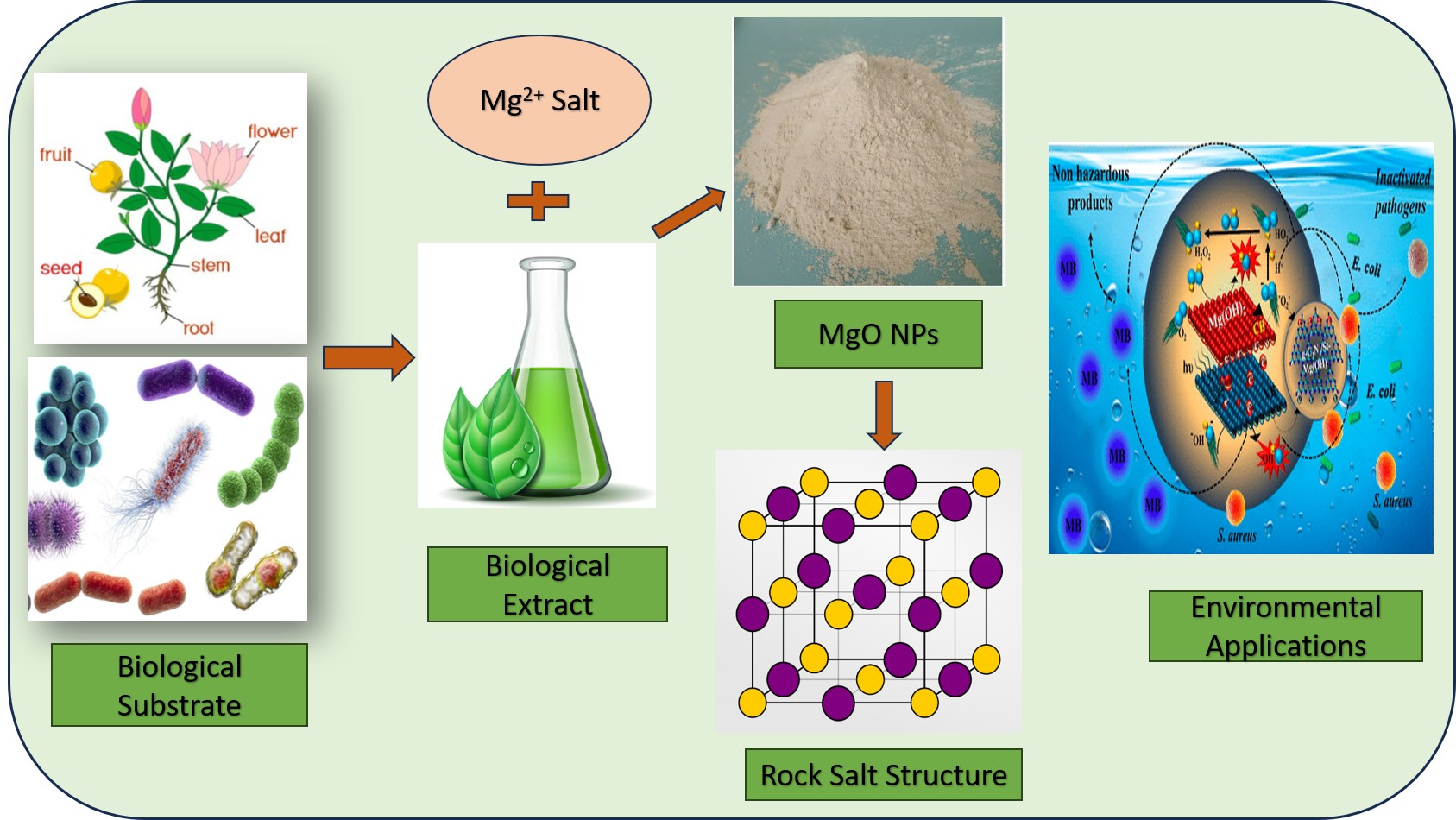Dimpal Chauhan, Shweta Kaushal, Kuldeep Kumar
1Department of Chemistry, Govt. College Jukhala, Bilaspur (H.P.), 176033, India.
2Department of Chemistry, Career Point University, Hamirpur (H.P.), 176041, India
3Centre for Nano-Science and Technology, Career Point University, Hamirpur (H.P.), 176041, India
* Author to whom correspondence should be addressed:
kuldeep.sharma.753@gmail.com (Kuldeep Kumar)
ABSTRACT
Magnesium oxide nanoparticles (MgO NPs) have garnered significant attention due to their exceptional thermal stability, biocompatibility, and versatile applications in biomedicine and environmental remediation. Conventional synthesis methods often involve toxic chemicals, high energy consumption, and complex instrumentation, limiting their sustainability. In contrast, green synthesis—utilizing plant extracts, bacteria, fungi, or algae—offers an eco-friendly, cost-effective, and scalable alternative. This review comprehensively examines recent advancements in the biosynthesis of MgO NPs, emphasizing their dual role in environmental and biomedical applications. In environmental remediation, MgO NPs exhibit remarkable photocatalytic efficiency in degrading organic pollutants such as industrial dyes (e.g., methylene blue, rhodamine B) and heavy metal ions (e.g., Pb²⁺, Cr⁶⁺) from wastewater, owing to their high surface area and redox-active surfaces. Their antimicrobial and antioxidant properties further enhance their utility in water purification technologies. In biomedicine, biosynthesized MgO NPs demonstrate potent antimicrobial activity against drug-resistant pathogens, anticancer effects through reactive oxygen species (ROS)-mediated apoptosis, and antioxidant capabilities that mitigate oxidative stress. Additionally, their biocompatibility supports potential applications in drug delivery, bioimaging, and tissue engineering. This review critically evaluates the advantages of biogenic synthesis over conventional methods, addressing challenges such as reproducibility, scalability, and long-term environmental impact. By integrating interdisciplinary insights, we highlight future directions for optimizing green synthesis protocols and expanding the multifunctional applications of MgO NPs in sustainable technologies.

Significance of the Study:
The study highlights the eco-friendly synthesis of magnesium oxide nanoparticles (MgO NPs) using plant and microbial extracts, offering a sustainable alternative to conventional methods. It underscores their dual applications in environmental remediation—such as pollutant degradation and heavy metal removal—and biomedicine, including antimicrobial, anticancer, and antioxidant activities. By addressing challenges in scalability and reproducibility, this research paves the way for sustainable nanotechnology solutions, contributing to cleaner environments and advanced healthcare while minimizing ecological harm.
Summary of the Study:
This review explores the green synthesis of MgO NPs using plant and microbial extracts, emphasizing their environmental and biomedical applications. In environmental remediation, they degrade pollutants and adsorb heavy metals, while in biomedicine, they exhibit antimicrobial, anticancer, and antioxidant properties. Despite their potential, challenges like synthesis reproducibility and long-term ecological effects remain. Future research aims to optimize production, enhance functionality, and assess real-world applicability, positioning biosynthesized MgO NPs as sustainable solutions for global health and environmental challenges.
